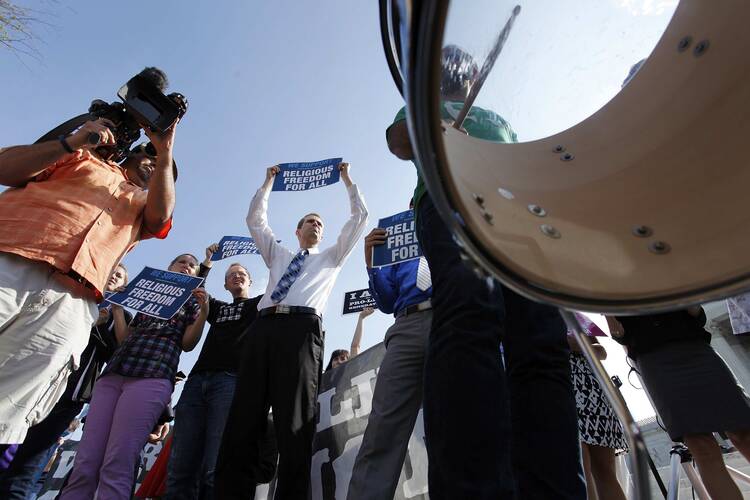Today’s Supreme Court decision in Hobby Lobby and Conestoga Wood case is as big a deal as it seems. It is a legal feast for First Amendment scholars, treating as it does so many of the sub-issues involved in Free Exercise litigation.
Plaintiffs were challenging a Department of Health and Human Services (HHS) regulation requiring employers to provide health insurance that included (without a co-pay) all FDA-approved contraceptives and emergency contraceptives. The two for-profit corporations involved were unwilling to cover Plan B and Ella (morning after drugs) and two forms of IUDs because manufacturers of these products acknowledge that can act to destroy already-formed human embryos. HHS did not dispute this. The companies sued under the Religious Freedom Restoration Act (RFRA), which requires that when a federal law substantially burdens religion, the law may not stand unless the government can demonstrate that it serves a “compelling state interest” by the means “least restrictive” of religious freedom. The decision today held the following:
- Closely held corporations are protected under the Religious Freedom Restoration Act. The Court reached this conclusion easily from the text and history of RFRA. The Court did not decide about larger corporations. They did note that such corporations have not and are unlikely to seek RFRA protection. They also indicated that state corporation law could provide the source for determining how a corporation does or does not adopt a religious viewpoint.
- The decision decisively recognized that the religious actor, not the government, gets to decide whether or not his or her religious conscience is violated. The Court’s language here was strong.
- While the Court voiced serious doubts that the federal government could demonstrate a “compelling state interest” sufficient to allow it to impose the contraception mandate in spite of the burdens on the plaintiffs, it ultimately held that it did not have to decide this question. Rather, it was enough for the Court to find that even if the government did have a compelling interest, it had failed to show that it had pursued its interest by the “least restrictive means.” Here’s where the opinion gets a little tricky.
On the one hand, the Court indicated that the government could simply provide women contraception directly as a way of satisfying its interests. On the other hand, the Court also stated that by granting for-profit corporations the same “accommodation” it was providing religious non-profits, it could satisfy the “least restrictive means” test. Could this indicate that groups like the Little Sisters of the Poor—who have this “accommodation” but who still hold that “facilitating” others’ purchasing contraception for their employees violates their conscience—are already the beneficiary of a “least restrictive means” law? The majority explicitly stated that it was not deciding this question for all religious claimants.
The Court was also careful to draw lines answering the “worst case scenarios” suggested by Justice Ginsburg’s dissent. The decision limited its holding to the law at issue (the mandate regarding contraceptives and morning-after drugs). It did not extend itself to cover medical procedures generally (e.g., immunizations, blood transfusions), and stated directly that it is no barrier to holding corporations responsible for abiding by nondiscrimination in employment laws, given the strength of governmental interests in these.
In my view, because no citizen can be sure whether or not they will enjoy a federal government suited to their political tastes, this case is a nonpartisan victory for the religious freedom of individuals to be free from laws burdening their religious freedom.








